Swiss Meringue Buttercream is silky smooth, easy to make and strikes the right balance between sweet, but not too sweet, and buttery, but not too rich. You can spread it; you can pipe it – and you can vary the flavors. We have several flavor variations for you: vanilla, chocolate, coffee, lemon, orange and raspberry.
What Is The Difference Between Buttercream & Frosting?
While the terms buttercream and frosting are often used interchangeably, we can discuss them in distinct ways. When I use the term frosting, I am usually speaking about confectioners’ sugar-based frostings, which are quite popular in the U.S. and are the typical go-to for American-style layer cakes.
The pluses of these frostings, which usually do contain butter by the way, are that they are easy to make in one bowl with an electric mixer. The downside is that they can be very sweet and the confectioners’ sugar, which is present in large quantities, will always leave a slightly gritty texture.
They are also sometimes made with vegetable shortening. If you are in the U.S. and get a sheet cake from a supermarket bakery, that is what you are most likely eating.
Additionally, the term “frosting” can be an action verb – as in, “I am frosting the cake”.
Buttercreams Described
Then there are buttercreams, which are more European in style. There is Italian Meringue Buttercream, which I have covered in-depth elsewhere on the site, and then there is Swiss Meringue Buttercream, which is what we are focusing on here.
They both involve cooked sugar syrup, so there is never any gritty texture; they are silky smooth and not-too-sweet. Some folks think they are more complicated to make, but if you follow our step-by-step instructions and use a thermometer as recommended, you will have success!
For some American palates, Italian and Swiss Meringue Buttercreams are too “buttery” – and they do contain a fair amount of butter. But in my opinion, they are incomparable when you are looking for something with a bit of elegance. When Robin and I owned our bakery, Harvest Moon, these European style buttercreams were our basic recipes, whether I was making sheet cakes, birthday cakes or wedding cakes.
What Is The Difference Between Italian & Swiss Meringue?
As I mentioned, to make Italian or Swiss Meringue Buttercream you need to cook sugar syrup, which in turn cooks the egg whites enough to create a stable and safe-to-eat, stiff meringue mixture. Once this meringue is beaten until cool, butter is added, then flavoring.
With Italian Meringue, you cook the sugar syrup in a pot and then pour it over the whipping egg whites. With Swiss Meringue, the egg whites and sugar are cooked together over simmering water until they reach the desired temperature of 160°F (71°C). Then they are whipped into a thick meringue and butter is added at that point. Same ingredients, different technique, similar outcome.
What Swiss Meringue Buttercream Is Not
I have a beef with the Internet. Well, truth be told it isn’t just one issue, but let’s focus on one for now. If you are not a professional baker and you cruise the web for ideas and recipes, you should know by now (hopefully you do; tell me you do) that you should not believe everything you read. For instance, there are MANY recipes out there that say they are low FODMAP, and they just aren’t. But I digress.
There are recipes on the Internet that would have you believe that Swiss Meringue Buttercream contains powdered sugar. It does not.
Swiss Meringue Buttercream Does Not Contain Powdered Sugar
Swiss Meringue Buttercream does not contain powdered sugar. How do I know this? Because any professional baker or recipe developer knows that certain recipes, such as this one, have history, specific ingredients and specific preparation techniques.
It is true that the ratio of egg whites to sugar to butter can vary, but powdered sugar is not part of the composition. There is no need. The granulated sugar provides the sweetness and structure that is necessary.
Powdered Sugar vs. Confectioners’ Sugar
As a slight aside, there is also my pet peeve with the terminology, “powdered sugar”. This term is often used in recipes found here and there on the web (like for recipes for (faux) Swiss Meringue Buttercream) and in cookbooks…
Here’s the thing: powdered sugar is simply that – it is sugar ground down to a very fine powdery texture. But it is very hard to find in the U.S. in conventional supermarkets, if it can be found at all (it cannot be found in mine).
What is easily found is confectioners’ sugar, which is powdered sugar to which a small amount of cornstarch has been added to prevent caking. These are not the same ingredient and yet inexperienced bakers and editors will use the terms interchangeably, when the items are not the same.
Know where your recipes are coming from folks, if you want great results. (End of rant).
What Makes This Recipe Low FODMAP?
My recipe for low FODMAP Swiss Meringue Buttercream is the same as classic Swiss Meringue Buttercream. You will see from the ingredients, below, that none of the ingredients called for are high FODMAP.
Ingredients For Swiss Meringue Buttercream
There are no fancy ingredients needed, just egg whites, sugar, butter, a pinch of salt, and flavoring, such as vanilla extract. All basic; all easy to find – and low FODMAP.
How To Make Swiss Meringue Buttercream
To make low FODMAP Swiss Meringue Buttercream, the process begins with separating your egg whites. Make sure that no egg yolk gets into your whites and that your bowl is scrupulously clean and free of grease.
Add the sugar and salt to the egg whites to your bowl.
Whisk them together. This recipe is most easily made with a stand mixer, so placing your egg whites and sugar in your stand mixer’s bowl at this time is a great approach. Clip a candy thermometer to the side of the bowl, with the tip down in the middle of the mixture.
Set the bowl with the sugar and egg whites over a pot with simmering water; the bottom of the bowl should not touch the water, lest you scramble your eggs! Whisk the egg mixture frequently as the water simmers and bring the egg mixture up to 160°F (71°C).
Why Temperature Is Important
There are recipes for Swiss Meringue Buttercream that suggest temperatures as low as 140°F (60°C) and as high as our recommendation of 160°F (71°C). I suggest the higher temperature for three main reasons:
- The higher temperature “cooks” the egg whites more effectively.
- The higher temperature provides a more reliably and appropriately stiff final buttercream, making it easier to spread and pipe.
- The stiffer buttercream also holds up better once on your cakes and cupcakes.
One the temperature has been reached, place bowl on stand mixer fitted with the wire whip attachment and whip on medium speed until a thick, opaque meringue forms, then turn to high and keep beating until cool to the touch – meaning it is room temperature and not warm at all. Time is not as important here as temperature. You want a brilliant white stiff meringue as seen below.
If you add the butter while the mixture is still warm, the butter will melt and you will end up with a soupy, liquidy mixture.
Once the meringue is cool to the touch, add the butter a few pieces at a time, allowing them to become incorporated before adding more. Once all of the butter is added, beat well until smooth. I sometimes switch to the flat beater at this point to create a super-smooth buttercream. Flavorings are added at this point. The photo below shows that you still have a ways to go to get it super smooth.
Focus On Butter
Butter is key to this recipe, which should be no surprise, since we are talking buttercream! I use unsalted, sweet butter for this recipe with 80% butterfat. This is the amount of butterfat in typical supermarket butter such as Land O’Lakes. Cabot brand has slightly more at 80.6% and will work well.
Do not use European, high-fat butters, such as Plugra, which have 82% butterfat. Your buttercream will end up too rich and greasy. There are buttercream recipes that are developed for this kind of butter; this isn’t one of them.
Speaking of too rich, you will note that the recipe calls for 1-pound (452 g) of butter. There have been times that I have used 12-ounces (340 g) instead, and if you would like a slightly less buttery, rich buttercream, you can try this as well.
Let’s Troubleshoot Problems with Swiss Meringue Buttercream
Even if you are an expert at making Swiss Meringue Buttercream, each batch will have its own issues, mostly due to temperature of ingredients.
What If My Swiss Meringue Buttercream Is Too Loose?
Sometimes after adding the butter, your Swiss Meringue Buttercream will look soupy and liquidy. This is usually because the meringue mixture was too warm and it subsequently melted the butter. It can also happen if you have not brought the meringue up to 160°F (71°C) originally…but you did do that, right? PS: Get yourself a thermometer!
Don’t fret. You can chill the soupy mixture and then beat again. You might ultimately lose some volume (and therefore yield of the total recipe) but it should work. Swiss Meringue Buttercream, just as I have explained in detail in my writings about Italian meringue Buttercream, is ALL about temperature. Don’t give up.
What If My Swiss Meringue Buttercream Looks Lumpy?
Other times, after adding the butter, your Swiss Meringue Buttercream will look lumpy and even curd-like. This is usually because the mixture just hasn’t been beaten enough and/or it is too cool. The latter usually happens if the butter was too cold. Beating is the key. Most stand mixers are so strong that simply beating more will take care of this issue. Keep going.
You can also try heating the mixture up a bit, by wrapping a warm towel around the bowl, or even aiming a hair dryer at the bowl.
For super creamy Swiss Meringue Buttercream I do like finishing with the flat beater attachment towards the end of beating. I find beating the buttercream with a flat beater can take it to an even creamier level.
PRO TIP: Just keep beating until it is super smooth and silky (see below).
Manipulate temperature as needed.
Low FODMAP Yellow Cake & Vanilla Frosting
In the images you are looking at our basic Yellow Cake, baked in an oblong pan, and frosted with vanilla Swiss Meringue Buttercream. It is perfect for a birthday cake – with rainbow sprinkles – as you can see below.
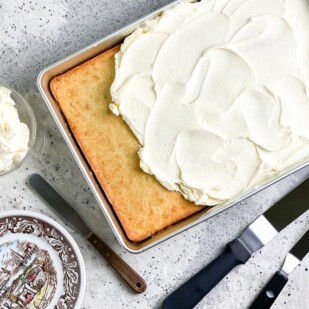
Low FODMAP Swiss Meringue Buttercream
Swiss Meringue Buttercream is silky smooth, easy to make and strikes the right balance between sweet, but not too sweet, and buttery, but not too rich. You can spread it; you can pipe it - and you can vary the flavors. We have several flavor variations for you: vanilla, chocolate, coffee, lemon, orange and raspberry.
Low FODMAP Serving Size Info: Makes about 4 ¾ cups (855 g); 8 servings of a generous ½ cup (107 g)
Ingredients:
- 1 1/4 cups (248 g) sugar
- ½ cup (120 ml) egg whites (from 3 to 4 large eggs), at room temperature
- 1/8 teaspoon salt
- 2 cups (1-pound; 452g; 4 sticks) unsalted butter, at room temperature, cut into tablespoon-sized pieces
Preparation:
-
In a large mixing bowl, preferably the stainless-steel bowl from your stand mixer, whisk together the egg whites, sugar, and salt.
-
Place this bowl over a saucepan or pot of simmering water, attach a candy thermometer and whisk the egg white/sugar mixture frequently until the mixture measures 160°F(71°C).
-
Attach the bowl to your stand mixer, attach the wire whip attachment and beat the meringue on medium speed until it the meringue is opaque white stiff and glossy. Turn speed up to high.
-
Add the butter, a couple of pieces at a time, with the mixer running. Allow butter to become incorporated before adding more. Scrape down the bowl as needed. If the buttercream texture is less than super-silky smooth, it is probably too cool. Just keep beating. Also, try switching to the flat beater attachment and beat some more until smooth. If the frosting appears too soft or soupy, simply chill for about 15 minutes and beat again. One the buttercream is perfectly smooth, you can beat in any of the flavors mentioned below in Tips. Use immediately, or if you would like to refrigerate it for up to 3 days, please refer to our article on How to Reconstitute Italian Meringue Buttercream and follow those directions. You can also freeze for 1 month. Defrost in refrigerator overnight, then follow instructions for reconstituting explained in that post.
Notes:
Tips
Flavor Variations
- Chocolate: Melt 6-ounces (170 g) of dark chocolate and beat in until smooth. The frosting will not be dark chocolate in color, rather it will be somewhat pale. For dark chocolate in flavor and color, try our Dark Chocolate Ganache.
Coffee: You can dissolve a tablespoon of instant espresso powder in 1 tablespoon of vanilla and beat it in.
Lemon: Beat in ¼ cup (60 ml) lemon curd until smooth; or try beating in 3 tablespoons fresh lemon juice
Orange: Beat in ½ cup (120 ml) orange marmalade; there will be a (lovely) chunky texture.
Raspberry: Beat in 2 tablespoons of fresh, strained raspberry purée. Or, if you don’t mind the seeds, just throw some fresh berries into the buttercream and beat until well incorporated. You might use up to half a pint.
Vanilla: Add 1 tablespoon vanilla extract, or to taste.
FODMAP Information
Our recipes are based on Monash University and FODMAP Friendly science.
- Butter: Both Monash University and FODMAP Friendly have lab tested butter. Monash states that a low FODMAP Green Light portion is 1 tablespoon or 19 g and also states that “butter is high in fat and does not contain carbohydrates (FODMAPs)”. FODMAP Friendly gives it a “Pass” at 1 tablespoon or 19 g. Both recommended serving sizes are presented as part of healthy eating guidelines, not as maximum FODMAP serving size. Fat can affect guy motility and trigger IBS symptoms in some people. Eat to your tolerance.
- Eggs: Eggs are high in protein and do not contain carbohydrates, according to Monash University.
- Sugar: Monash University and FODMAP Friendly have both lab tested white, granulated sugar. Monash states that a Green Light low FODMAP serving size of white sugar is ¼ cup (50 g). FODMAP Friendly simply states that they have tested 1 tablespoon and that it is low FODMAP. Regular granulated white sugar is sucrose, which is a disaccharide made up of equal parts glucose and fructose. Sucrose is broken down and absorbed efficiently in the small intestine.
Please always refer to the Monash University & FODMAP Friendly smartphone apps for the most up-to-date lab tested information. As always, your tolerance is what counts; please eat accordingly. The ultimate goal of the low FODMAP diet is to eat as broadly as possible, without triggering symptoms, for the healthiest microbiome.
Nutrition
All nutritional information is based on third-party calculations and should be considered estimates. Actual nutritional content will vary with brands used, measuring methods, portion sizes and more. For a more detailed explanation, please read our article Understanding The Nutrition Panel Within Our Recipes.
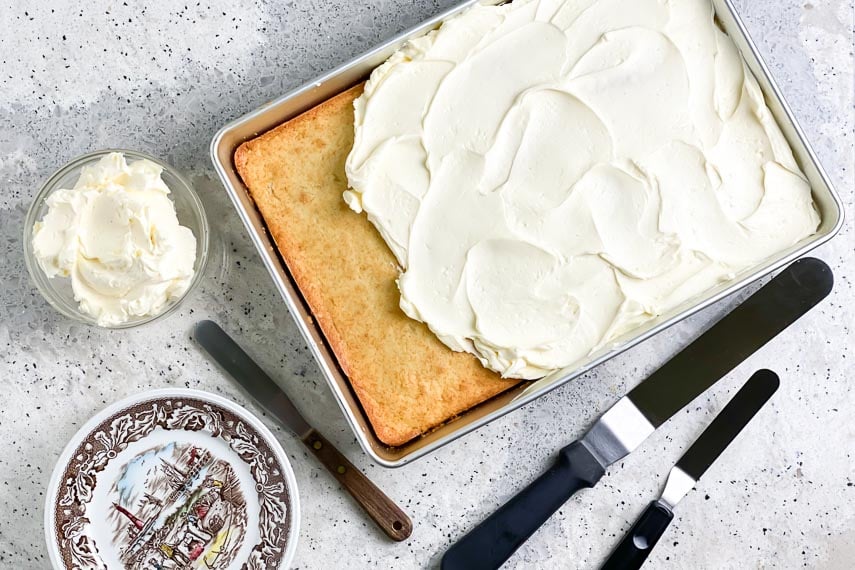
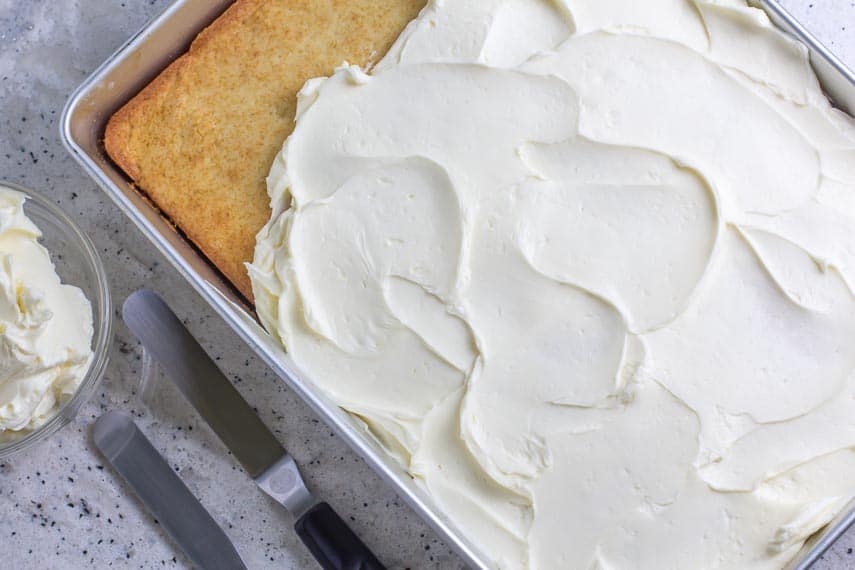
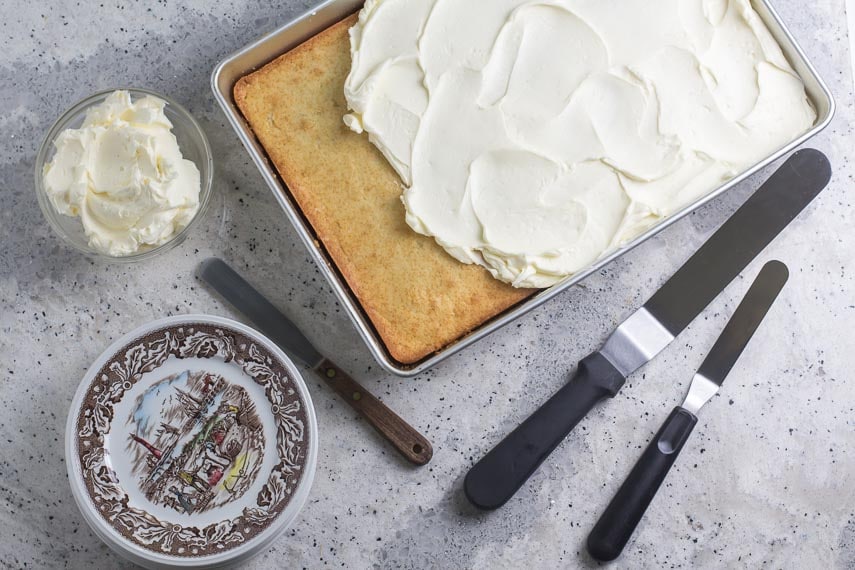
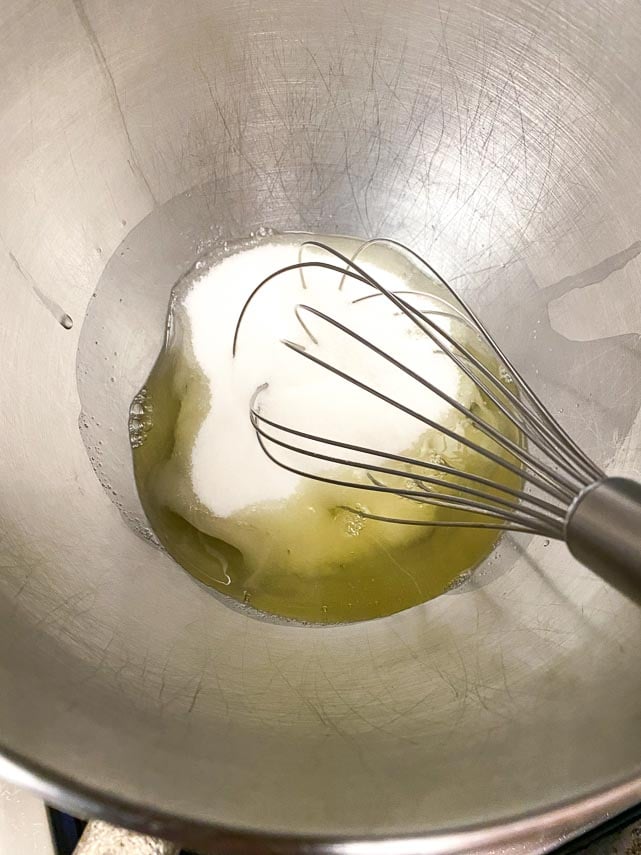
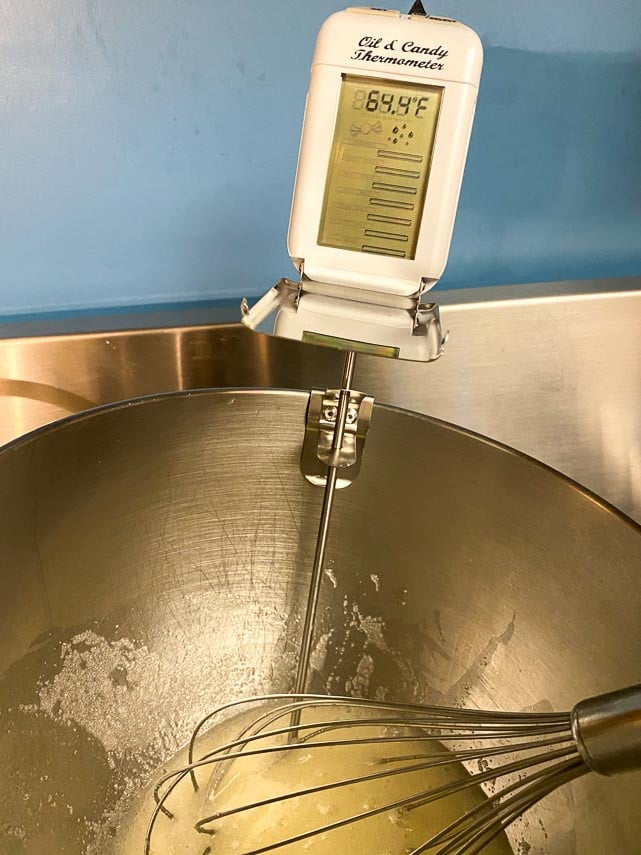
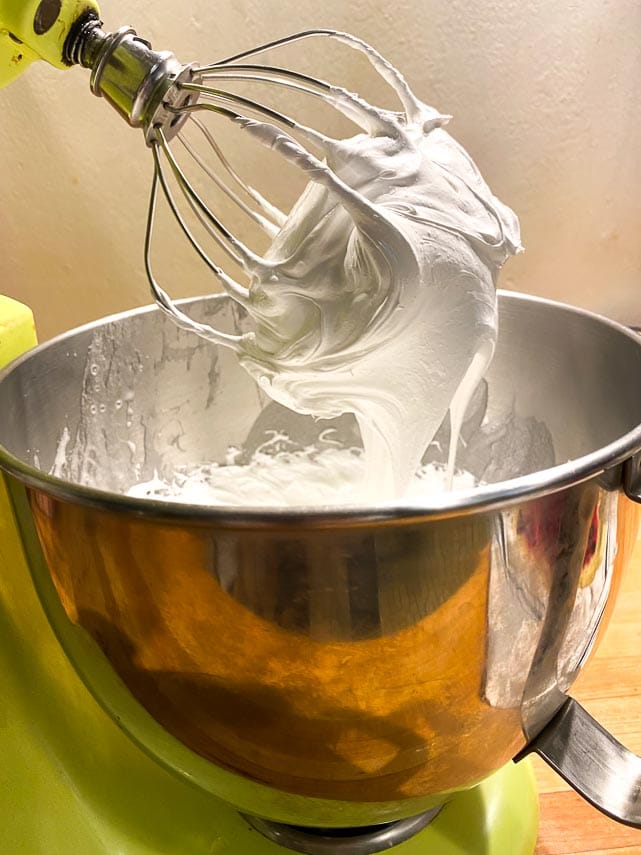
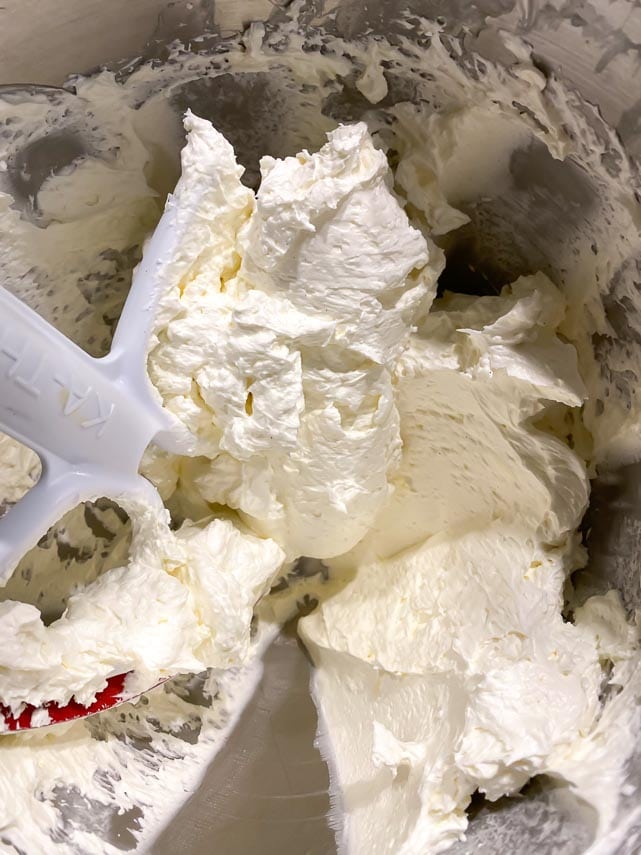
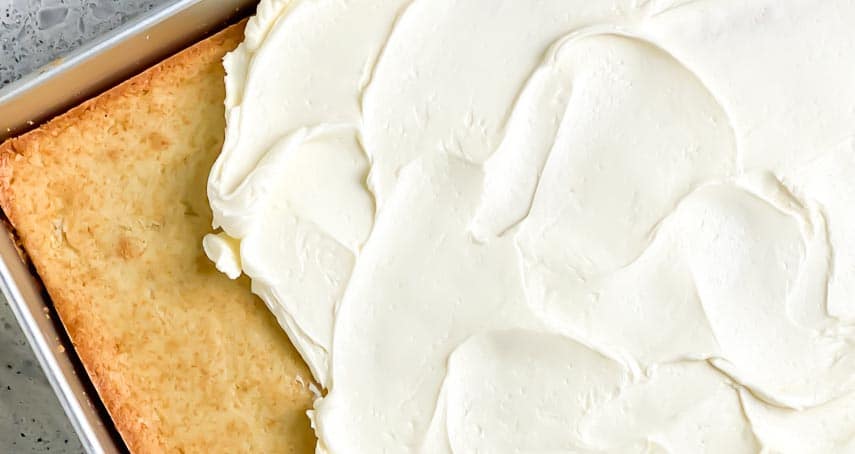

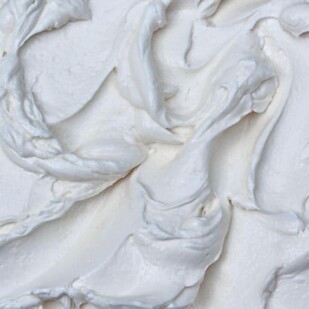




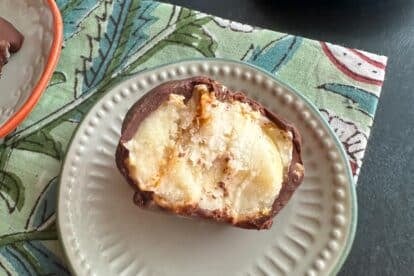
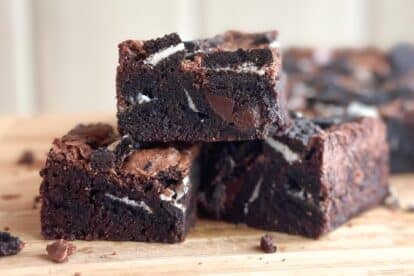
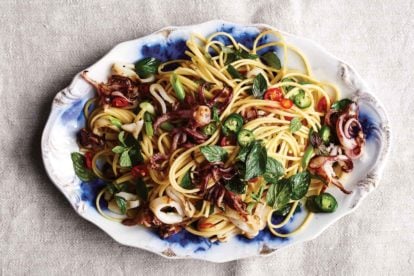
Is it possible to make this with a handheld mixer?
I would not recommend it. You might burn out the motor and you Will be standing there for a long long time